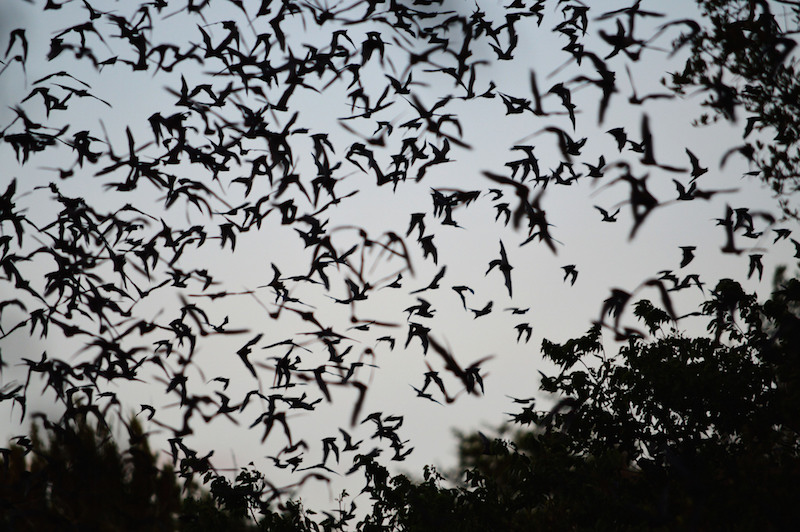You’ve probably heard bats by the hundreds, flying out of a cave or from under a bridge. But have you heard a bat solo, squeaking to be fed?
“She can chew and talk all at the same time,” Dianne Odegard says, talking to the female bat she’s feeding. “It’s the middle of the day, you’re not that hungry.”
Odegard is the education and public outreach manager at Bat Conservation International, based in Austin. But this isn’t Odegard doing her job. It’s her at home being a bat lover or, more accurately, a bat rehabilitator.
“That’s always the goal of rehabilitation,” Odegard says. “It’s not to gather as many animals as possible. It’s to release as many animals back to the wild as possible.”
Odegard gets that not everyone understands her passion for bats. But lately more people are interested in attracting bats to their yards. Why?
“In the United States, the vast majority of bats are insectivorous bats,” Odegard says.
That means they eat insects and some statistics claim bats could eat as many as a thousand mosquitoes per hour – welcome news in a world with West Nile, Chikungunya, and now Zika.
“Eastern red bats, which is a common foliage roosting bat around really all over the United States, they’ve found 27 separate insect species in droppings from the Eastern Red Bat,” Odegard says.
But bats don’t eat only mosquitoes and it appears mosquitoes are hardly their favorites.
“When you think about it, mosquitoes are very small,” Odegard says, “they’d have to work really hard in other words to catch enough mosquitoes to get the protein that they need where a moth – that’s easier for them and more nutritious for them.”
Another bat expert says that’s not the only problem with this idea of bats battling Zika. Fran Hutchins is the Bracken Cave Preserve director.
“Primarily the mosquito that carries Zika feeds during the day,” Hutchins says.
As we all know, bats come out as it gets dark. So what comes out during the day and might eat mosquitoes?
“There are actually several different types of birds that would eat mosquitoes,” Dr. Tania Homayoun, with the Texas office of the National Audubon Society, says.
One of them is the purple martin. Tens of thousands of purple martins roost in trees in Austin. Purple martins are credited with being voracious mosquito eaters, but does the science back it up?
“It’s a little bit of a misconception that purple martins are the ultimate mosquito hunters,” Homayoun says. “The science doesn’t actually bear that out.”
I know what you’re thinking – buzz kill. But Dr. Homayoun does have a suggestion.
“Chimney swifts do seem to have,” Homayoun says, “from studies done on their stomach content – it’s not a lot – but they do take mosquitoes.”
Just as you can attract bats to your house, you can attract chimney swifts – with the right housing .
“If you do not have a chimney or your chimney is capped,” Homayoun says, “you can actually put up a chimney swift tower.”
But chimney swifts probably won’t get rid of all of your mosquitoes. So what’s the solution to battling those bugs and avoiding infection? Well you probably shouldn’t ignore that regular advice: dump standing water and wear long sleeves and pants, even though it’s July. Still, it certainly wouldn’t hurt to welcome both birds and bats to your yard. They might just make nice neighbors.
















